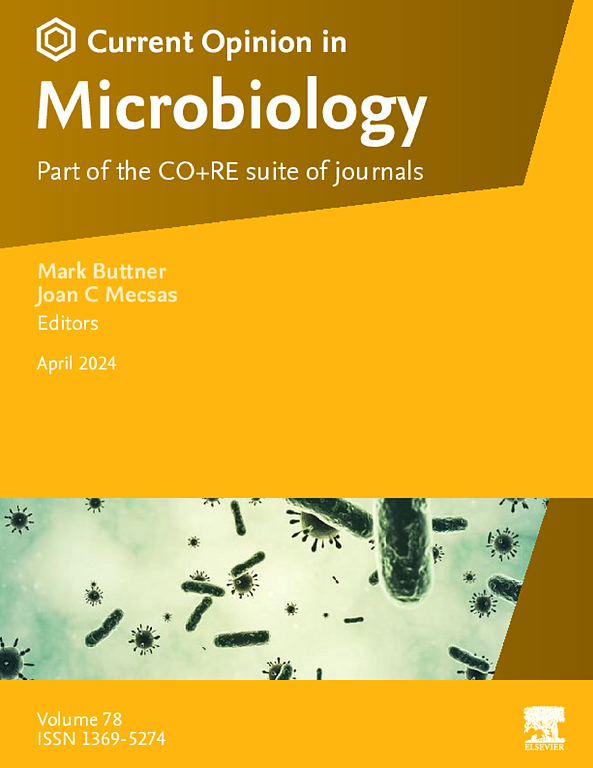Immune evasion runs in the family: two surface protein families of Plasmodium falciparum–infected erythrocytes
IF 7.5
2区 生物学
Q1 MICROBIOLOGY
引用次数: 0
Abstract
Two protein families are found on the surfaces of erythrocytes infected with Plasmodium falciparum, a causative agent of deadly malaria. PfEMP1 are tethers binding endothelial receptors and holding infected erythrocytes to tissue and blood vessel surfaces, away from splenic clearance. RIFINs interact with immune receptors on natural killer cells, suppressing infected erythrocyte destruction. Both have expanded into families of diverse members to allow antigenic variation but retain surfaces of conserved chemistry and shape to bind human receptors. Recently discovered broadly inhibitory antibodies target one such surface on many EPCR-binding PfEMP1. Remarkable antibodies take this one step further, directly incorporating ectodomains of immune receptors into their loops, allowing RIFIN recognition. Finally, some RIFINs are targets of activating killer immune receptors, helping natural killer cells destroy infected erythrocytes. Studies of these two families therefore reveal a snapshot of the battle between this ancient parasite and the immune system of its human host.
免疫逃避在家族中运行:恶性疟原虫感染红细胞的两个表面蛋白家族。
在感染恶性疟原虫(致命疟疾的病原体)的红细胞表面发现了两个蛋白质家族。PfEMP1是结合内皮受体的栓系物,将受感染的红细胞固定在组织和血管表面,使其远离脾清除。RIFINs与自然杀伤细胞上的免疫受体相互作用,抑制受感染的红细胞破坏。两者都扩展到不同成员的家族中,以允许抗原变异,但保留保守的化学表面和形状,以结合人类受体。最近发现的广泛抑制抗体在许多epcr结合的PfEMP1上靶向一个这样的表面。非凡的抗体更进一步,直接将免疫受体的外环结合到它们的循环中,允许RIFIN识别。最后,一些RIFINs是激活杀伤免疫受体的目标,帮助自然杀伤细胞破坏感染的红细胞。因此,对这两个家族的研究揭示了这种古老寄生虫与其人类宿主免疫系统之间斗争的快照。
本文章由计算机程序翻译,如有差异,请以英文原文为准。
求助全文
约1分钟内获得全文
求助全文
来源期刊

Current opinion in microbiology
生物-微生物学
CiteScore
10.00
自引率
0.00%
发文量
114
审稿时长
6-12 weeks
期刊介绍:
Current Opinion in Microbiology is a systematic review journal that aims to provide specialists with a unique and educational platform to keep up-to-date with the expanding volume of information published in the field of microbiology. It consists of 6 issues per year covering the following 11 sections, each of which is reviewed once a year:
Host-microbe interactions: bacteria
Cell regulation
Environmental microbiology
Host-microbe interactions: fungi/parasites/viruses
Antimicrobials
Microbial systems biology
Growth and development: eukaryotes/prokaryotes
 求助内容:
求助内容: 应助结果提醒方式:
应助结果提醒方式:


